How much do you know about penguins? They attract us by their charming waddle, remarkable adaptability to harsh environments and shiny appearances. But there is a lot more about penguins than you think.
Penguins are flightless birds that are mostly found near the coastal areas. They are not simply black bodies with a white-belly bird. There are several species of penguins, and they have distinctive traits.
In this article, I have discussed diverse types of penguins and their habitat, and dietary systems. I have also talked about penguins’ behavioral facts, reproduction system and communication system in brief. Let’s explore the world of penguins.
What are the Characteristics of a Penguin?
Penguins are divided into 18 species and their characteristics are slightly different. However, some basic traits are common among all the species such as they all are carnivorous. Here is a closer look at their basic characteristics:
| Characteristics | Description |
|---|---|
| Common name | Penguins |
| Family | Spheniscidae |
| Number of Species | 18 |
| Size | 35cm to 115 cm |
| Weight | 1kg to 45kg |
| Coloration | Generally Black and White |
| Head | Varies based on the species |
| Tail | Short and Stiff tails |
| Lifespan | 10-20 Years |
| Habitat | Southern Hemisphere |
| Diet | Carnivores |
| Mating Life | Varies based on the species |
| Communication | Vocalization, Body Language, Displays |
| Conservation status | Varies based on the species |
Penguins are the native of the southern hemisphere. They belong to the Spheniscidae family. Furthermore, these birds have a short and stiff tail, and they are generally black and white in color.
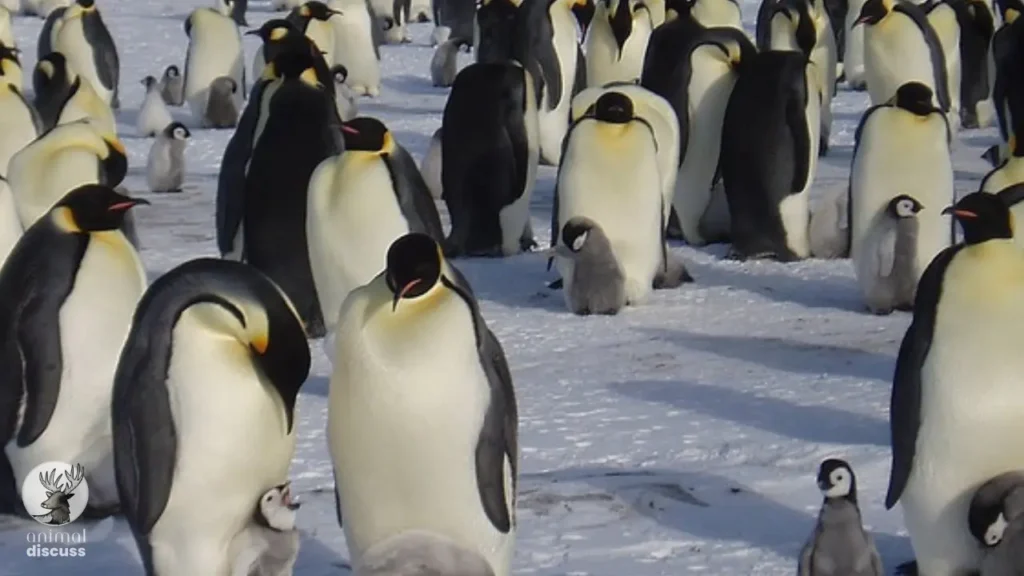
Some penguins have a yellow color bill. The basic characteristics of all eighteen species are the same. For example, all of them are flightless, carnivorous birds. However, mating life, size, weight, and lifespan, vary based on the species.
Types of Penguins
As I have said, there are 18 species of penguins and they are divided into six divisions: crested, banded, brush-tailed, large, yellow-eyed and little. Let’s take a look at different types of penguins and their distinctive characteristics.
| Division | Species | Distinctive Characteristics |
|---|---|---|
| Large | 01. Emperor penguin 02. King penguin | 1. The largest species of penguins 2. Grow around 130 cm tall and weighs up to 40 kg 3. Great divers 4. Second largest species of penguins 5. Live near subantarctic islands |
| Brush-tailed | 01. Gentoo penguin 02. Adelie 03. Chinstrap | 1. Third largest species of penguins 2. Closely related to Adelie and Chinstrap 3. Have distinctive orange bills and feet 4. Live on the mainland of Antarctica 5. Have a black strap around their chin 6. Assemble in large breeding colonies |
| Crested | 01. Southern Rockhopper penguin 02. Northern Rockhopper 03. Fiordland penguin 04. Snares penguin 05. Crested penguin 06. Macaroni penguins 07. Royal penguins | 1. They have a colorful crest of black and yellow spiky head feathers 2. They feature unique hopping movements on the stony hills 3. Northern Rockhopper penguins’ eyebrows are longer than southern Rockhopper 4. An endangered animal 5. Above each eye, they have a thick band of pale-yellow feather plumes. This stripe is visible from the bill to the back of the head 6. They live on the coastal rocks or colonies shaded by the forest’s tree canopy 7. Have a yellow plumes crest over the eyes 8. The face and chin are black 9. Have a tall crest of yellow-orange feathers 10. Largest penguins of the crested species 11. Looks almost similar to a macaroni penguins |
| Yellow eyed | Yellow-eyed penguin | 1. Feature pale yellow eyes 2. There is a yellow strip on the upper part of the head 3. Rarest species of penguins |
| Little | Little penguin | Smallest species of penguins |
| Banded | 01. African penguin 02. Humboldt 03. Magellanic 04. Galapagos | 1. Black-footed penguin 2. Have a circle of featherless skin around the eye 3. Have a strap of black feathers across the breast 4. Only found on the coast of Peru and Chile 5. Black body and white belly 6. Monogamous species |
Where do Penguins Live?
Penguins mostly live near the southern hemisphere below the equator. There is a common misconception that all species of penguins live in the Antarctic. No, they live in various environments, including the dry beaches of Chile and Peru.
Only around ten species of penguins live in the Antarctic or the sub-Antarctic. The remaining species reside in South Africa, Australia, Chile, Peru, and Ecuador.
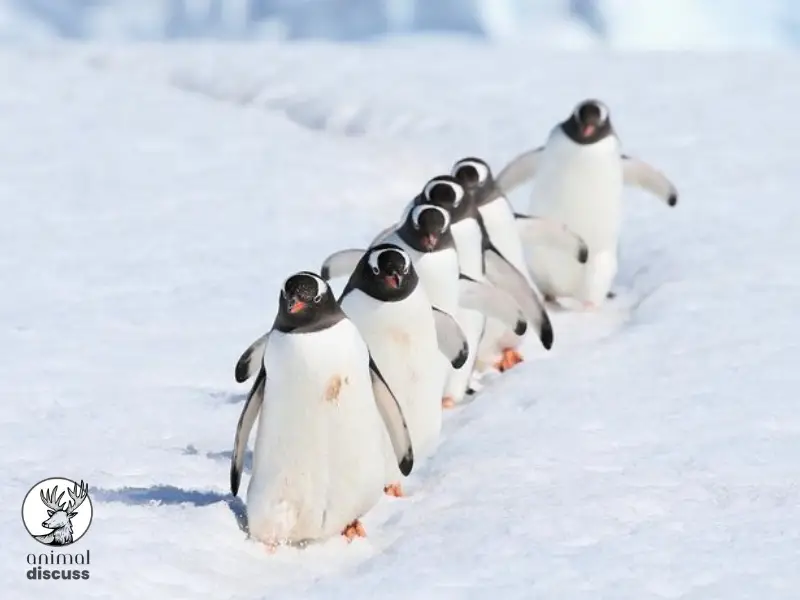
Antarctica is the habitat of Emperor penguins, chinstrap penguins, gentoo penguins, and royal penguins. On the other hand, Jackass penguins live in the southeastern coast of Africa. Withal, Little Penguin and Snares penguin reside in New Zealand.
Furthermore, some species of penguins also live in South America. Rockhopper penguins are found in southern Chile and Argentina. Peru and Chile are home to the Humboldt penguin. Magellanic penguins and Gentoo penguins are found in the Falkland Islands.
Penguins can adapt to any temperature range from -10°c-30°c. However, they prefer cooler climates. Penguins have thick layers of fat and waterproof feathers which help them to live in extreme cold areas such as Antarctica.
Other species that live in regions such as South Africa, South America and New Zealand can survive temperate weather. The temperature in these places reaches up to 20° c.
To know further about their habitat in detail, read this article “Penguin Habitat: Where do the Flightless Birds Live”.
What are the Behavioral Facts of Penguins?
There are several behavioral traits of penguins such as preening, head shaking and bowing, molting, thermoregulation, migration, etc.
A penguin maintains clean, well-oiled, and waterproof feathers in order to stay warm. This activity is called preening. Penguins nibble at the oil gland located at the base of their tail to transfer the oil to their beak. Then, they apply it to their body.
Accordingly, during the courtship phase of penguins, the head shaking and bowing behavior starts. At this phase, new couples get to know one another. Partners will always bow and shake their heads to each other in order to strengthen their relationship.

Withal, the penguin undergoes a weeks-long molting process once a year. The new feathers come in; the old ones are pushed out by the ones that are made beneath the skin.
And a penguin will eat more during the weeks before molting in order to put on weight and prepare for a prolonged length of time spent out of the water.
Likewise, as most of the penguins live in extremely cold areas, they huddle together in groups to conserve body heat. And penguins take turns rotating from the colder outer edge to the warmer center of the huddle.
Migration is another behavioral trait of penguins. Some penguin species undertake long migrations in search of food. They also migrate in search of nesting sites. For example, Emperor penguins travel more than hundreds of kilometers to reach breeding colonies.
To know further about their habitat in detail, read this article “Penguin Behavior“.
How Do Penguins Communicate?
Penguins communicate by using vocalizations and physical displays. Each penguin’s vocalization is unique. Therefore, it allows mates to recognize each other and their chick. This is significant since penguins in a large colony can hardly be distinguished from one another by sight.
In addition, penguins also communicate by performing physical behaviors called displays. They employ a variety of displays to convey nesting territories, nest-reliving rituals, mate and chick recognition, and defense against intruders.
For example, to show that penguins own a nesting location, they swing their heads. Similarly, penguins bend down or point toward their nest as a sign of submission.
What do Penguins Eat?
Penguins are carnivorous animals, and they mostly eat fish cephalopods like squid, cuttlefish, Krill and crustaceans. However, varied species of penguins have different preferences.
For example, King or Emperor penguins like to eat cod and sardines. On the other hand, Chinstrap penguins like to eat krill. However, krill and silverfish are the favorite foods of little penguins.
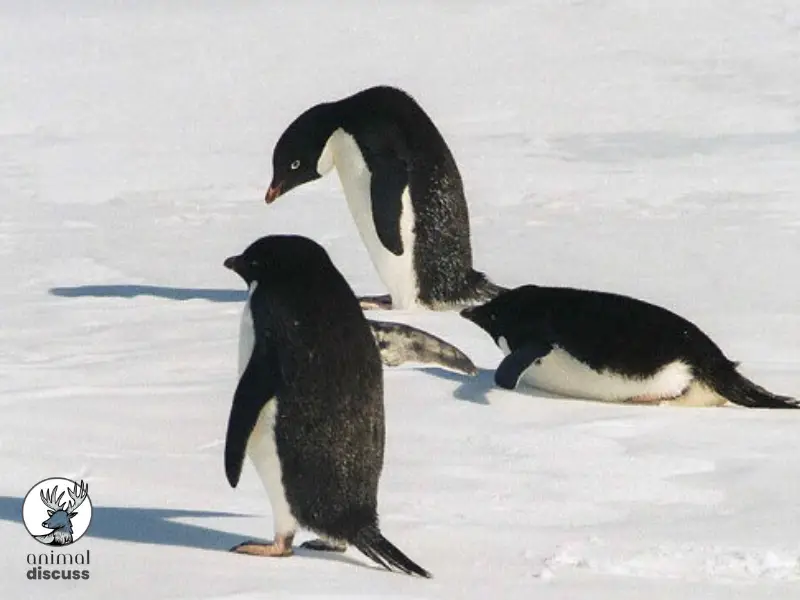
At the same time, other species such as Macaroni, Snares, and Fiordland like to eat octopus and squid. While the African species like to eat small fish, Sardines, and cuttlefish are preferred by the Galapagos, Magellanic penguin.
Interested to know further about their diet? Check this article in my blog “Penguins’ Diet: What Do These Aquatic Birds Eat?”.
How Do Penguins Reproduce?
The reproductive system of penguins is similar to other birds. Penguins reproduce sexually where the males transfer sperm to the females through an opening called cloaca. The mating season of most species of penguins is early Spring to Summer.
However, the mating times of penguins depend on geographical location. It also varies in different species. For example: Emperor penguins mate during the Antarctic winter: June to August. Conversely, Humboldt and African penguins mate throughout the year.
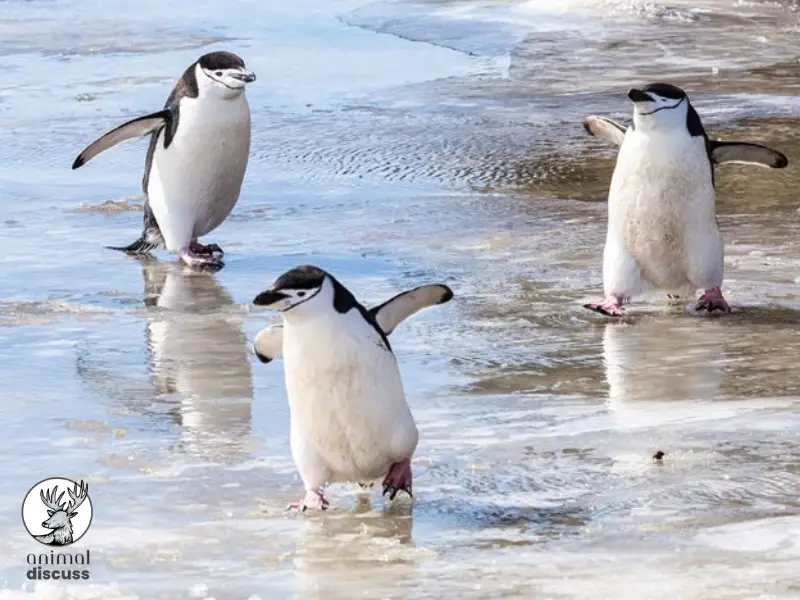
Like other birds, penguin reproduces by laying eggs. Based on the species, the female penguin lays one or two eggs after building the nest. After that, the parent penguin incubates the eggs for embryo development. This takes several weeks to incubate.
The parent penguin hides the egg beneath a skin fold on its belly known as the brood patch in order to keep it warm. This brood patch is dense with blood vessels so the parent penguin can transmit heat directly to the egg for incubation.
Conservation Status of Penguins
The International Union for the Conservation of Nature (IUCN) has enlisted seven species of penguins as “Least Concern”, and two are “Near Threatened”.
Similarly, five species are listed as “Vulnerable”. These five species are at considerable risk of extinction in the wild. Other five species are at very high risk of extinction and those are listed as “endangered”.
See below the conservation status of all penguins.
| Species | Conservation Status |
|---|---|
| Adelie Penguin | Least Concern |
| Chinstrap Penguin | Least Concern |
| Gentoo Penguin | Least Concern |
| King Penguin | Least Concern |
| Little Penguin | Least Concern |
| Magellanic Penguin | Least Concern |
| Emperor Penguin | Near Threatened |
| Royal Penguin | Near Threatened |
| Fiordland Penguin | Vulnerable |
| Humboldt Penguin | Vulnerable |
| Macaroni Penguin | Vulnerable |
| Snares Penguin | Vulnerable |
| Southern Rockhopper Penguin | Vulnerable |
| Yellow-eyed Penguin | Endangered |
| Northern Rockhopper Penguin | Endangered |
| Galapagos Penguin | Endangered |
| Crested Penguin | Endangered |
| African Penguin | Endangered |
Can You Keep a Penguin as a Pet?
No, you cannot keep a penguin as a pet. Penguins are very cute animals. At the zoo, no one skips the penguin exhibit. However, Because of several reasons, they cannot be kept as pets. For example:
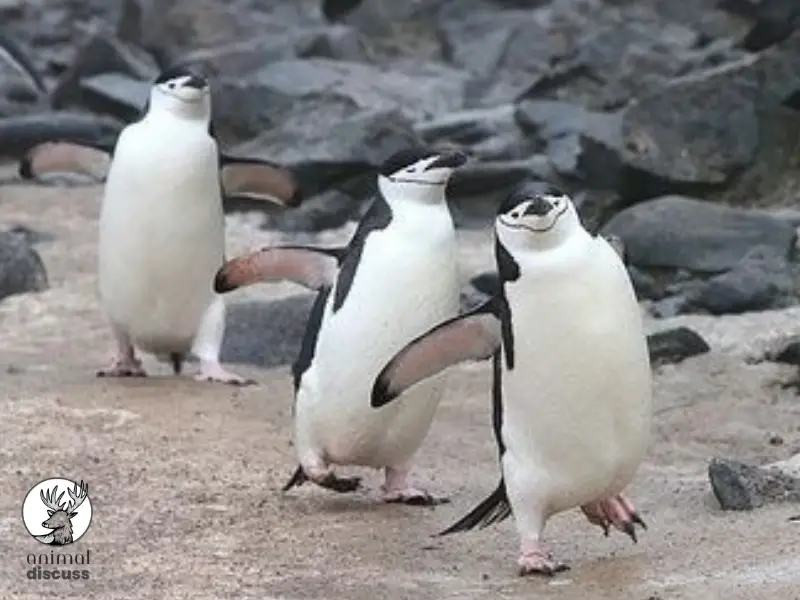
- Penguins need massive care, and they have massive appetites.
- They also have social needs, so they live in a group of 20 or more Penguins.
- Penguins are exotic animals. Like most of the exotic animals, it is illegal to keep a penguin as a pet.
FAQs
Here are some frequently asked questions about penguins:
Conclusion
The flightless bird penguins have 18 different species. Their habitat and eating habits differ slightly among the species. They live mostly near the southern hemisphere. However, some species of penguins are found in Africa, New Zealand, Peru and Chile.
As carnivorous animals, penguins mostly eat fish and aquatic animals such as squid and octopus. However, several types of penguins have different preferences. Their reproduction system is similar to other birds.
- https://www.usatoday.com/story/news/2023/02/08/where-do-penguins-live/10525425002/
- https://www.pbs.org/wnet/nature/blog/penguin-fact-sheet/
- https://animaldiversity.org/accounts/Aptenodytes_forsteri/
- https://www.calacademy.org/explore-science/common-penguin-behaviors
- https://ielc.libguides.com/sdzg/factsheets/africanpenguin/behavior-page

